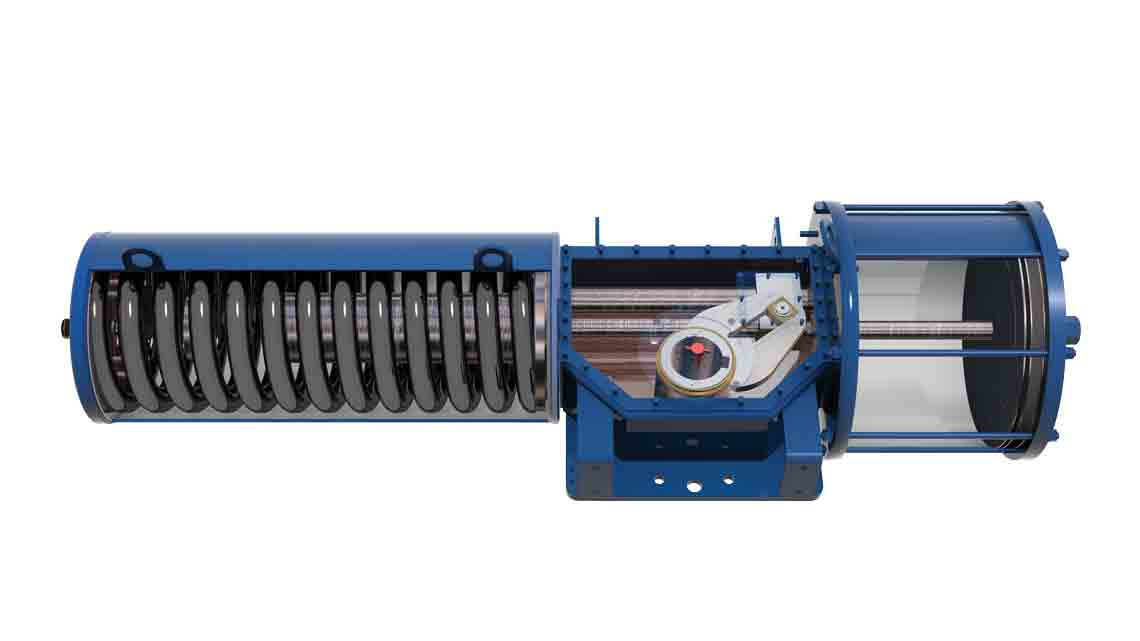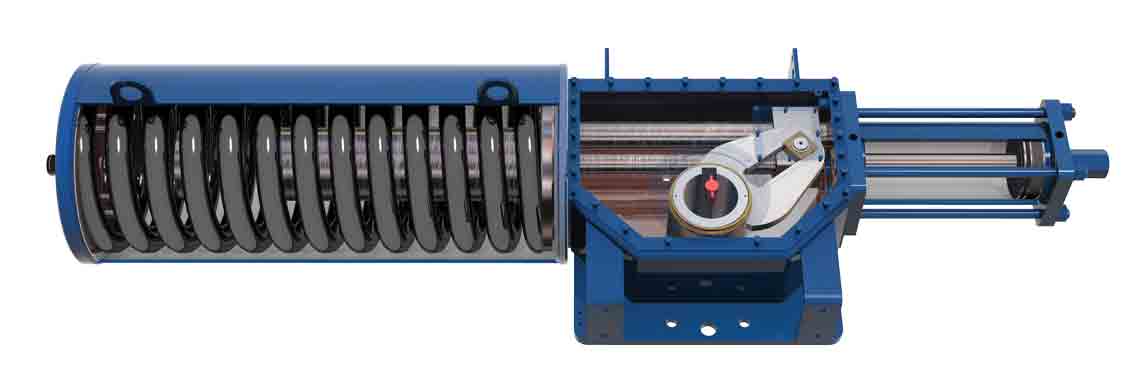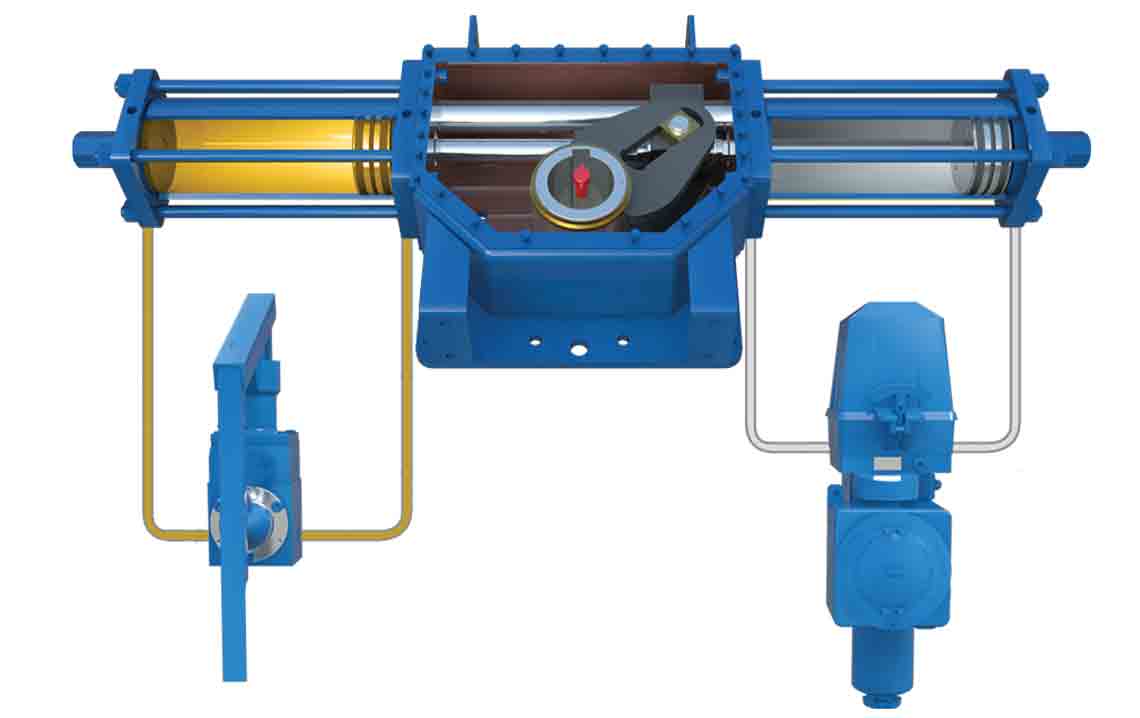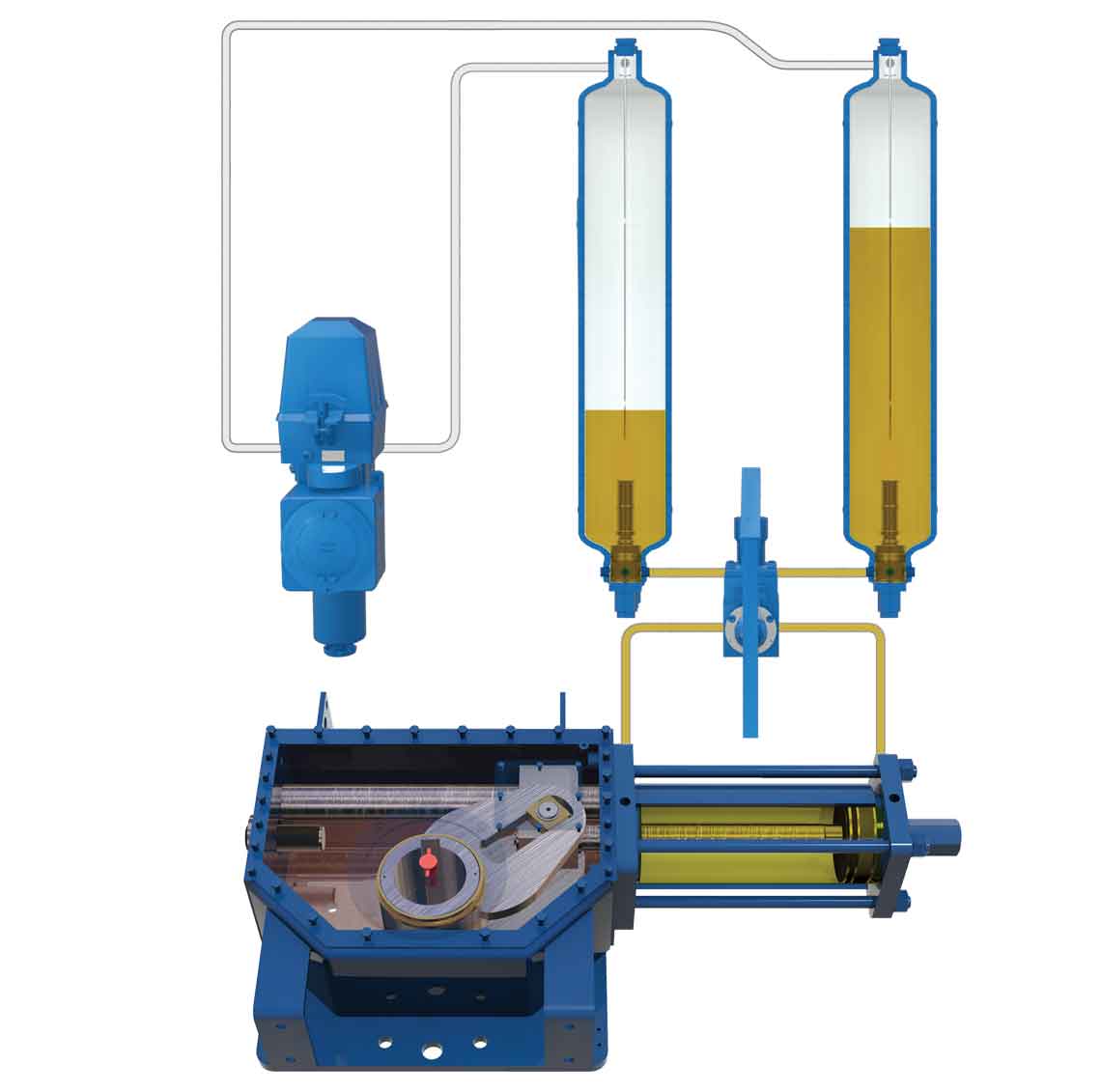Pneumatic Ledeen Actuators
Quarter-turn operation
Reliable performance with compressed air, natural gas, or nitrogen.
已发表: 01/08/2015

已发表: 01/08/2015

Actuators can automate valves so that no human interaction with the valve package is necessary to cycle the valve. They can be remotely operated and act as shutdown mechanisms in an emergency situation that would be dangerous for human intervention.
At a basic level, an actuator is a control mechanism that is operated by an energy source. This energy—hydraulic pressure, pneumatic pressure, or electric current—moves the internal mechanical parts of the actuator. Actuators can be designed to fail open (in the case of actuator failure, the valve will stay open) or fail close (in the case of actuator failure, the valve will stay closed). They are also distinguished by whether they are for quarter-turn (e.g., ball valves, plug valves) or linear (e.g., gate valves) valve operation.
Double-acting actuators have air or liquid supplied to both sides of the piston with one side at higher pressure, which achieves the movement required to actuate the valve. This configuration uses pneumatic or hydraulic pressure of the air or liquid energy to open and close the valve.
Spring-return actuators have air or liquid supplied to only one side of the piston, and the energy to move the mechanisms comes from a spring on the opposite side. This configuration uses pneumatic or hydraulic pressure of the air or liquid to open or close the valve, and a spring affects the opposite motion.
Pneumatic actuators utilize compressed air to generate the operating energy. These actuators are quick to respond but are not ideal for environments under high pressures because gas is compressible. Pneumatic actuators are available in spring-return and double-acting designs.

Hydraulic actuators use liquid as a means to apply pressure to the actuator’s mechanical components. They can exert a large amount of force because liquid is not compressible but are generally limited in acceleration and speed. Hydraulic actuators are available in spring-return and double-acting designs.


Gas-over-oil actuators use high-pressure gas supplied from the pipeline suspended above a hydraulic fluid to move the mechanics of the actuator. Gas-over-oil actuators are available only in double-acting configurations.
Electric actuators use an electric source, such as a battery, to power the actuator. They usually include intricate electrical circuitry. Because of their use of electricity as a power source, they may not be ideal for remote installations.

The Industrial Revolution brought about the use of water to hydraulically actuate valves, and by the 1920s, pneumatic actuation was in use. With the invention of more advanced process plants with higher pressure requirements, more sophisticated electric designs and innovations in gas-over-oil actuation developed. Around the 1950s, high-pressure gas actuators were created to meet the high pressure demands of the pipeline industry as well as electrohydraulic actuators for critical fail-safe applications.
Actuators are ideally suited for installations in which human interaction is either not possible or is dangerous, such as where space or installation location inhibits access to the valve operator.